Top 10 Most Famous and Beautiful Churches In Canada
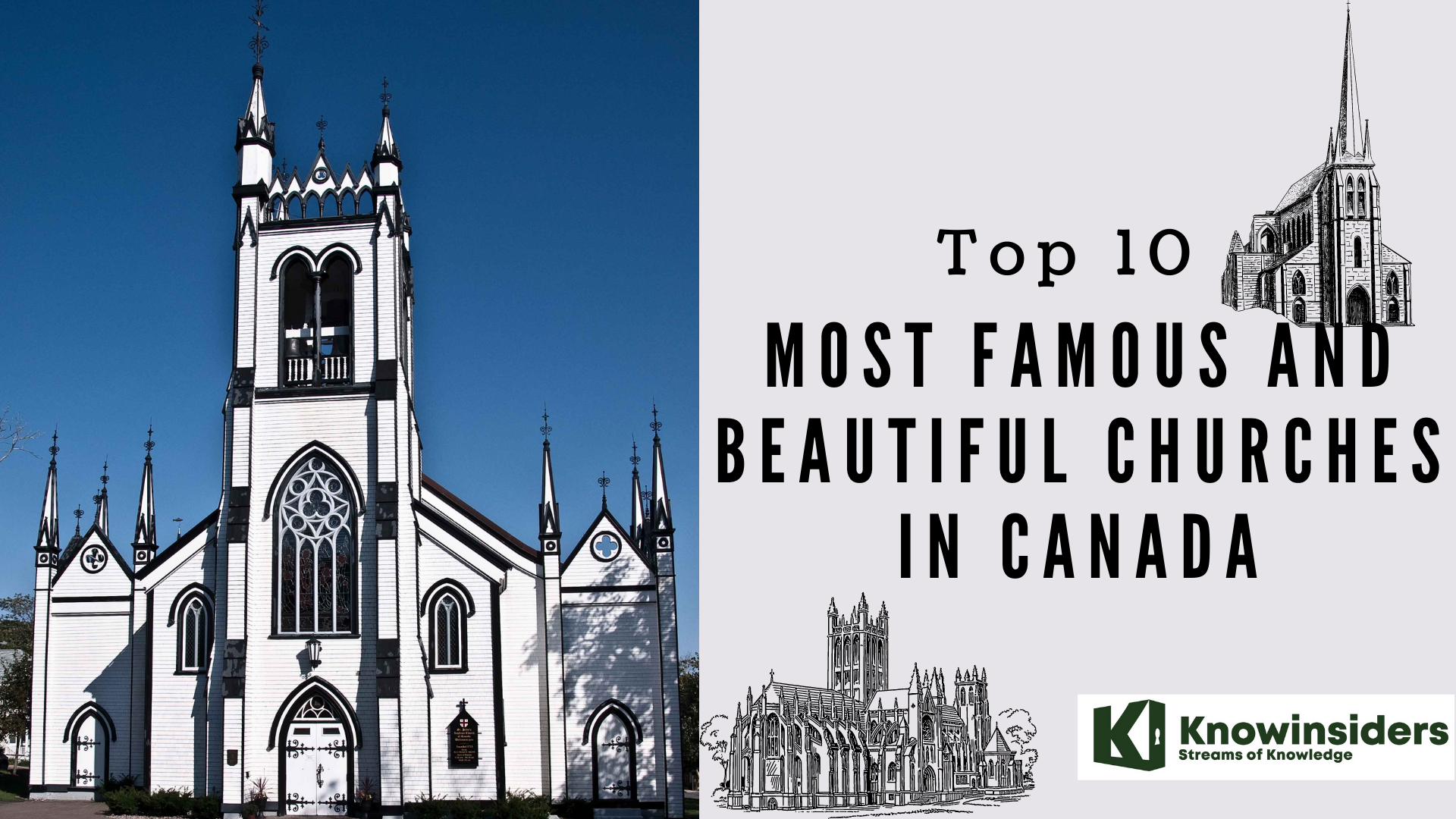 |
| Top 10 most famous and beautiful churches in Canada |
Churches in Canada are some of the most incredible and awe-inspiring buildings. The cathedrals, with their towering steeples and gothic design, easily rank as some of the most impressive architecture this country has to offer.
The diversity of culture, religion and geographical location makes Canada a place worth visiting for all the people throughout the world. Canadian architecture is something which is worth mentioning in this regard. There are many architectural specimens present in this country which suffices to turn our head. Visiting this place would remain incomplete without visiting the top 10 most famous churches in Canada.
The List of top 10 most famous churches in Canada
10. Notre-Dame Basilica, Quebec
9. Notre-Dame-de-Bon-Secours Chapel, Quebec
8. Church of Cooks Creek, Manitoba
7. St. Peter’s Cathedral Basilica
6. St. Dunstan's Basilica, PEI
5. Basilica of Notre-Dame-du-Cap, Quebec
4. Drumheller’s Little Church, Alberta
3. Basilica of Sainte-Anne-de-Beaupré, Quebec
2. Basilica of St. John the Baptist, Newfoundland
1. St. John’s Anglican Church, Nova Scotia
What are the top 10 most famous churches in Canada?
10. Notre-Dame Basilica, Quebec
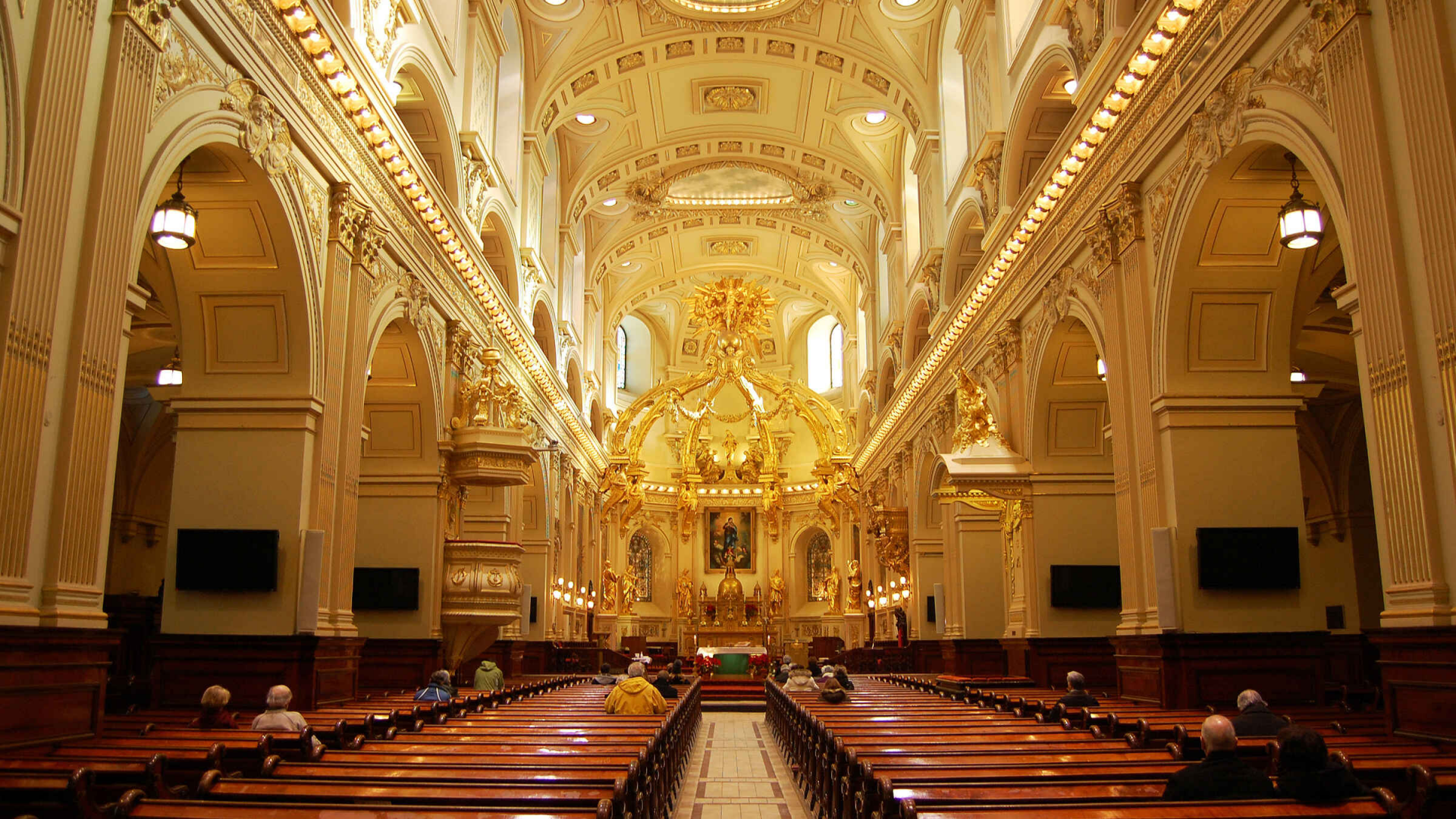 |
| Photo: GetYourGuide |
The Cathedral-Basilica of Notre-Dame de Québec ("Our Lady of Quebec City"), located at 16, rue de Buade, Quebec City, Quebec, is the primatial church of the Roman Catholic Archdiocese of Quebec. It is the oldest church in Canada and was the first church in Canada to be elevated to the rank of minor basilica, by Pope Pius IX in 1874. Four governors of New France and the bishops of Quebec are buried in the crypt, including François de Laval, Quebec's first bishop.
The church is a National Historic Site of Canada, and located within the UNESCO World Heritage Site of Historic District of Old Québec.
The cathedral has twice been destroyed by fire, the first time being during the Siege of Quebec in 1759. It was rebuilt from plans by Gaspard-Joseph Chaussegros de Léry draughted in 1743. The belltower, however, was designed by Jean Baillairgé, who also oversaw construction. The interior was designed by Jean Baillairgé and his son François from 1786–1822. In 1843, François' son, Thomas, suggested a reconstruction of the façade to resemble the church of Sainte-Geneviève in Paris, resulting in the finest Neo-classic façade in Québec. The cathedral was richly decorated with impressive works of art: baldaquin, canopy, episcopal throne dais, stained glass windows, paintings, and chancel lamp (a gift of Louis XIV).
In 1922 the church was again gutted by fire, this time by the Canadian faction of the Ku Klux Klan, and restored by architects Maxime Roisin and Raoul Chenevert. Raoul Chenevert added a presbytery beside the Cathedral in 1931-32.
In 2014 the cathedral celebrated its 350th anniversary. As part of the celebrations, a holy door was constructed—the second outside Europe and only the eighth in the world. The holy door was opened on December 8, 2013 and remained open until December 28, 2014. It again opened from December 8, 2015 to November 20, 2016 for the Year of Mercy after which it was sealed until 2025.
9. Notre-Dame-de-Bon-Secours Chapel, Quebec
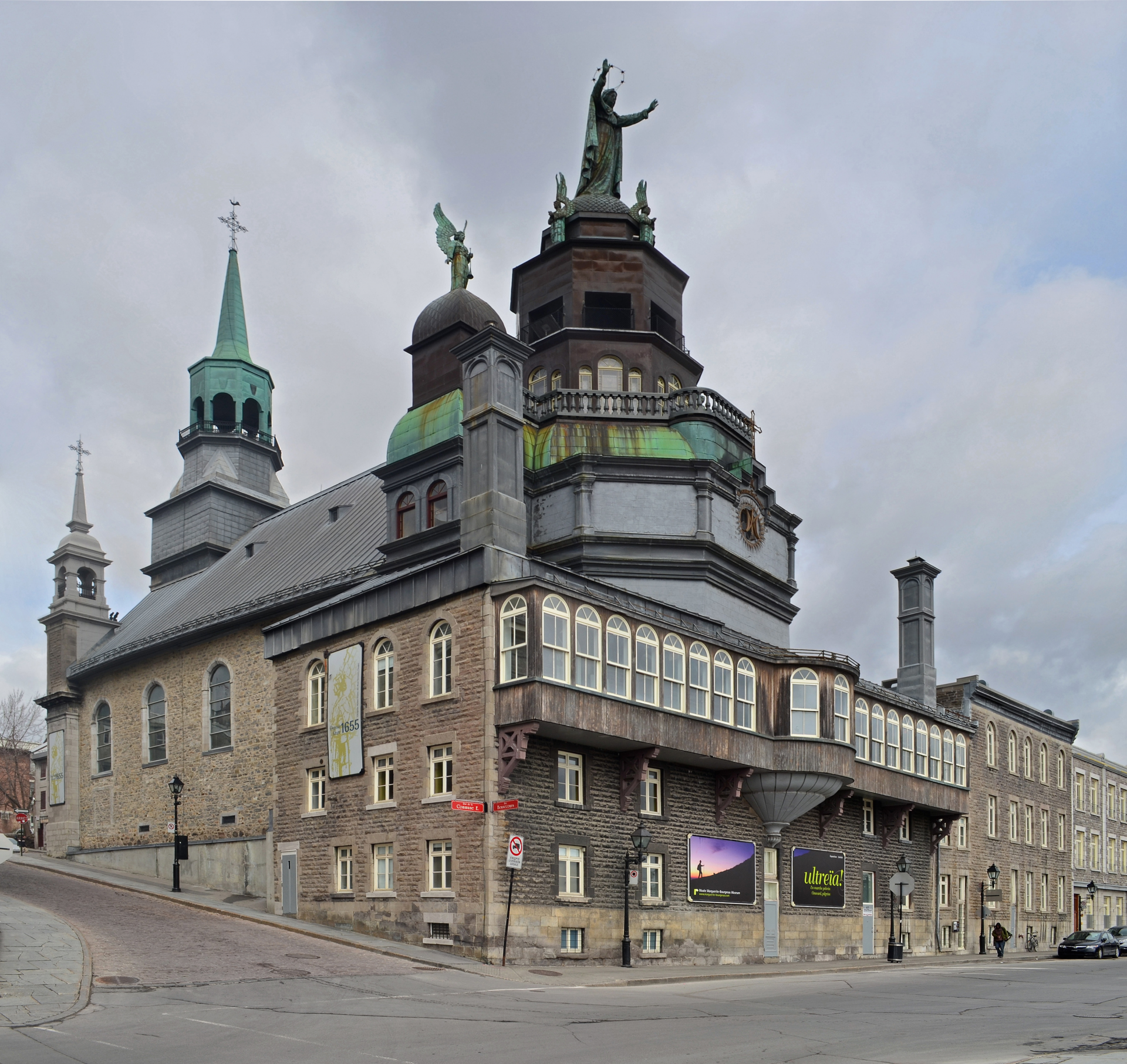 |
| Photo: Wikimedia Commons |
The Notre-Dame-de-Bon-Secours Chapel (chapelle Notre-Dame-de-Bon-Secours, "Our Lady of Good Help") is a church in the district of Old Montreal in Montreal, Quebec. One of the oldest churches in Montreal, it was built in 1771 over the ruins of an earlier chapel. The church is located at 400 Saint Paul Street East at Bonsecours Street, just north of the Bonsecours Market in the borough of Ville-Marie (Champ-de-Mars metro station).
St. Marguerite Bourgeoys, the first teacher in the colony of Ville-Marie and the founder of the Congregation of Notre Dame, rallied the colonists to build a chapel in 1655. In 1673, returning from France, Bourgeoys brought a wooden image of Our Lady of Good Help; the stone church was completed in 1678. It burned in 1754, the reliquary and statue being rescued and placed above the entrance of the rebuilt church of 1771.
After Montreal was conquered by British forces during the French and Indian War, the church was attended by Irish and Scottish troops and families, and saw fundraising to build Saint Patrick's Church, Montreal's first anglophone Catholic parish.
In the 19th century, the chapel came to be a pilgrimage site for the sailors who arrived in the Old Port of Montreal; they would make offerings to the Virgin in gratitude for her "good help" for safe sea voyages. In 1849, Mgr. Ignace Bourget, Bishop of Montreal, gave the chapel a statue of the Virgin as Star of the Sea, which was placed atop the church overlooking the harbour. Emphasizing the connection of the chapel and the port, the chapel is often called the Sailors' Church.
The chapel now also houses the Marguerite Bourgeoys Museum, dedicated to the life of St. Marguerite Bourgeoys and to the early history of Montreal and the chapel site. Below the chapel, the crypt is being excavated as an archeological site, which visitors can see. First Nations and French colonial artifacts have been discovered, along with the foundations of the first chapel and the fortifications of the colony. The church's prominent spire can also be climbed, offering views of the Old Port and Saint Lawrence River. In 2005, Marguerite Bourgeoys's mortal remains were brought back to the church, where she now lies in the sanctuary.
8. Church of Cooks Creek, Manitoba
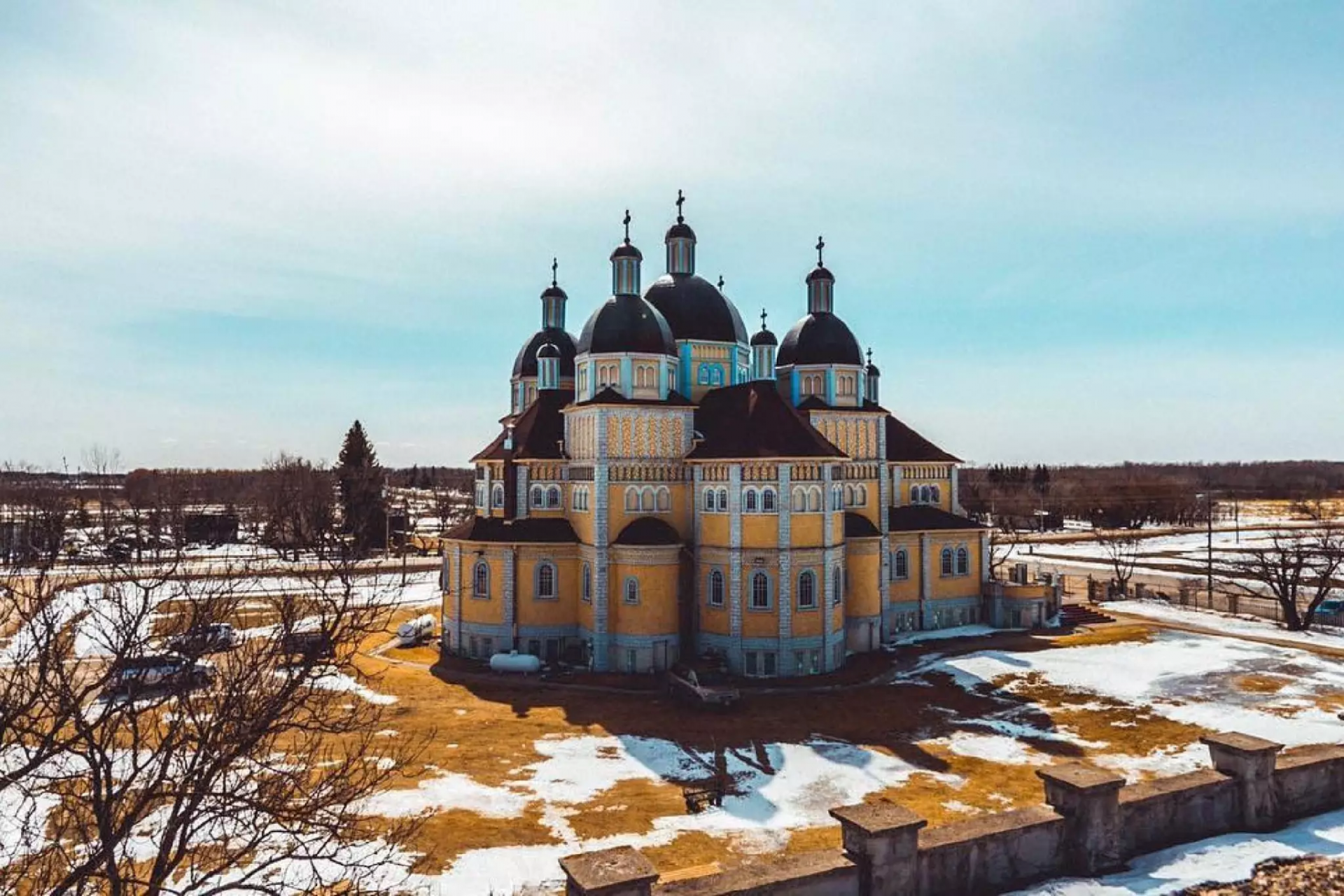 |
| Photo: FreshDaily |
The Ukrainian Catholic Church of the Immaculate Conception, also known as Church of Cooks Creek, constructed in stages beginning in 1930 and consecrated in 1952, is a multi-storey domed structure situated on Road 212 in the village of Cooks Creek in a complex that includes the Grotto of Our Lady of Lourdes and a cemetery. The provincial designation applies to the church and its large lot.
The Ukrainian Catholic Church of the Immaculate Conception holds important connections to a significant era in Ukrainian church construction in Manitoba, as well as to its noted priest-architect, Father Philip Ruh, O.M.I.. One of the largest Ukrainian Catholic churches in Western Canada and one of the impressive `Prairie cathedral-style' churches in Manitoba, the building exhibits a formal approach to design that follows the dynamic forms and colours of Ukrainian Baroque churches coupled with a wealth of other architectural motifs and elements - all carried out in concrete, stucco and paint. The vernacular is innovatively fused with Ukrainian motifs, while the basic materials are enlivened with faux finishes in emulation of the richness of grand European churches. The structure was almost entirely hand-built by volunteers (including Father Ruh) and local artisans painted the elaborate interior. Father Ruh, who is buried in the nearby church cemetery, is credited with designing more than 30 churches from Alberta to Ontario, each a distinct interpretation of his `Prairie cathedral' aesthetic.
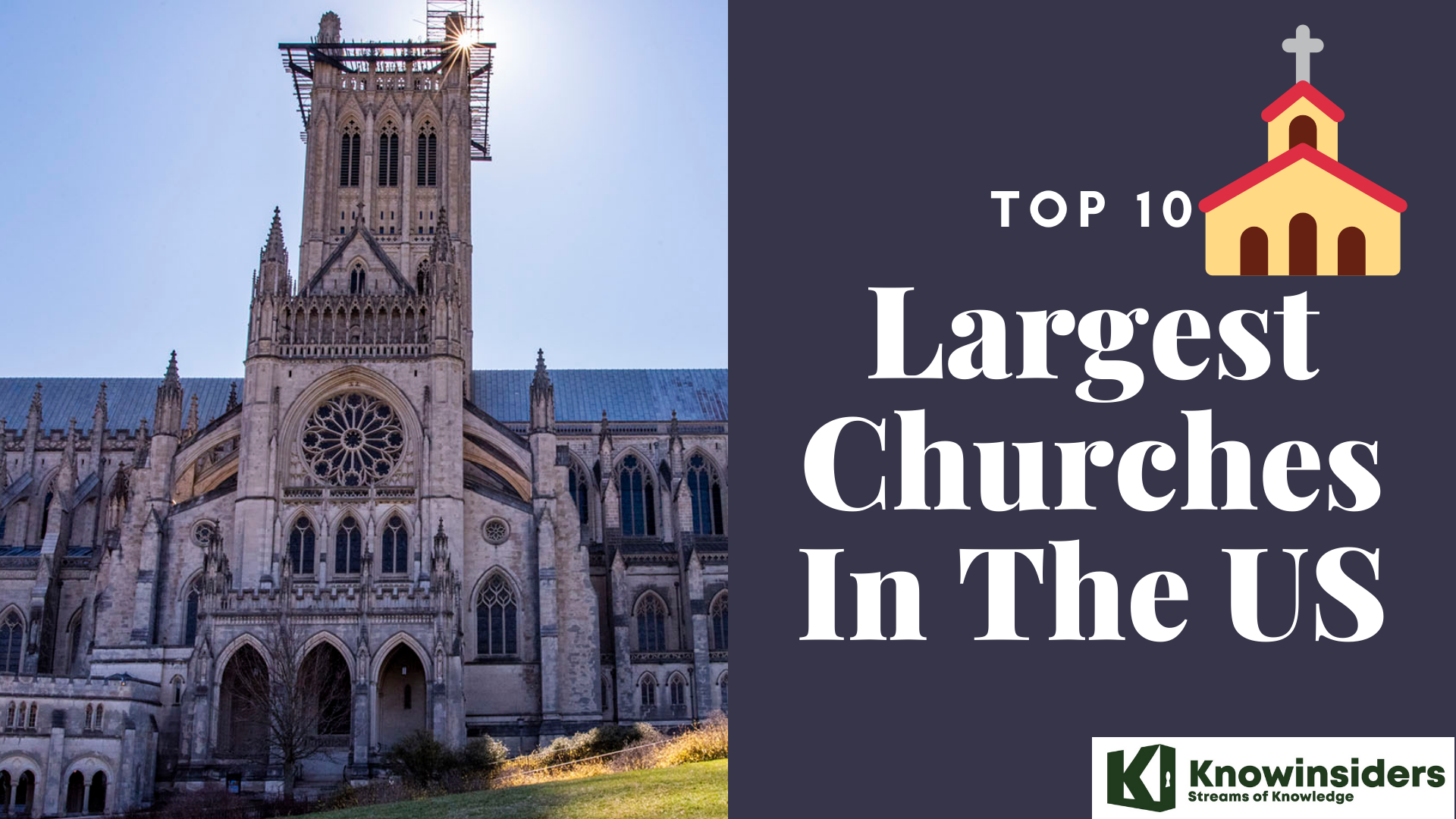 Top 10 Largest Churches In The US Top 10 Largest Churches In The US In recent years, churches have been more than just a simple place gathering for religion, and the community has expanded greatly, along with the churches. ... |
7. St. Peter’s Cathedral Basilica
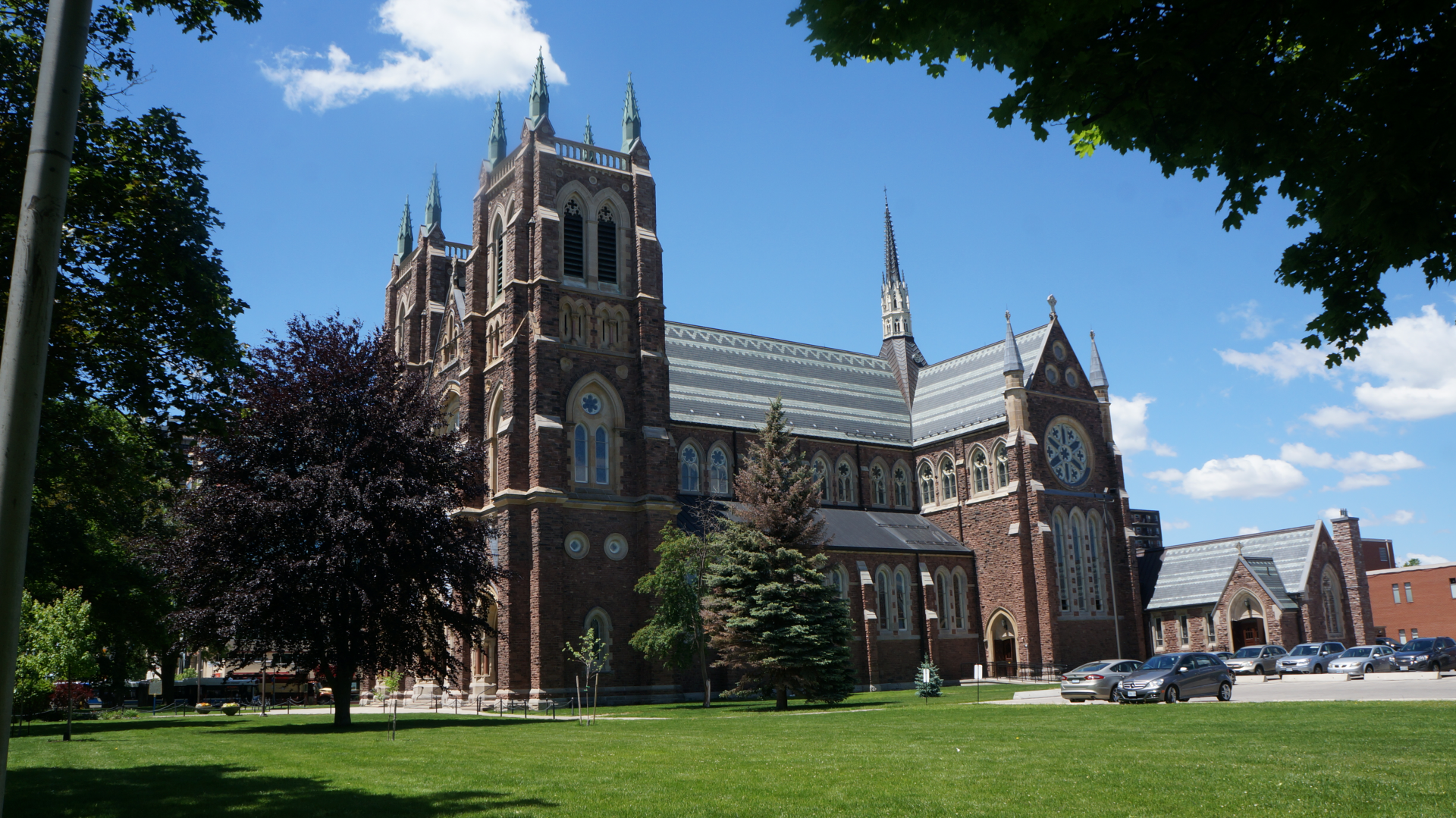 |
| Photo: Wikipedia |
St. Peter's Cathedral Basilica, is a church located at 196 Dufferin Avenue in London, Ontario, Canada for the seat of the Roman Catholic Diocese of London.
The parish now known as St. Peter's was established 10 August 1834 and the first church was constructed of logs at the southwest corner of Dufferin Avenue and Richmond Street. Prior to this, a travelling priest visited the area to celebrate Mass for Catholic residents. The church was dedicated to St. Lawrence and could hold 180 people. It was destroyed along with much of the town in the London fire of 11 April 1845.
A larger frame church was built with donated materials and labour, but this church also burned in August 1850. This was replaced by a new St. Lawrence Church constructed of brick. The new church was located at the northeast corner of Dufferin and Richmond, just in front of the present structure. This land was granted by the Crown to Bishop Alexander Macdonell of the Diocese of Kingston. The cornerstone for the new church was laid 29 June 1851, the Feast of Sts. Peter and Paul.
The Diocese of London was created in 1856 and Bishop Pierre-Adolphe Pinsoneault selected St. Lawrence as his cathedral renaming the church St. Peter's. In 1859, Bishop Pinsoneault moved the seat to Windsor where it remained until 1868 when Bishop John Walsh, Pinsoneault's successor, moved it back to London.
Bishop Walsh felt that the diocese should have a cathedral that was a true monument to its people. He selected Joseph Connolly as architect and construction began in July 1880.The structure was built in a 13th-century French French Gothic Revival style between 1880 and 1885. The cathedral was dedicated 28 June 1885. The first stained glass windows were added in 1889 but the interior decoration was not completed until 1926. The Casavant organ was also installed in that year.
In 1958, the twin towers of the facade, Lady Chapel and sacristy were added, stained glass windows were installed in the narthex and additional interior painting and decoration completed. St. Peter's was raised to the status of a minor basilica 13 December 1961 by Pope John XXIII.
6. St. Dunstan's Basilica
St. Dunstan's Basilica is the Cathedral of the Diocese of Charlottetown in Charlottetown, Prince Edward Island, Canada. It is named for St. Dunstan the Anglo Saxon saint from Glastonbury. It is located on Great George Street, between the harbour and the Confederation Centre of the Arts.
The present stone structure was built in 1916, after a fire destroyed the original cathedral in 1913.
In October 1980 it was the site of a state funeral when Prime Minister Pierre Elliot Trudeau gave the eulogy during the funeral for Veterans Affairs Minister Daniel J. MacDonald (M.P. Cardigan). The Basilica was designated as a National Historic Site of Canada in 1990.
5. Basilica of Notre-Dame-du-Cap, Quebec
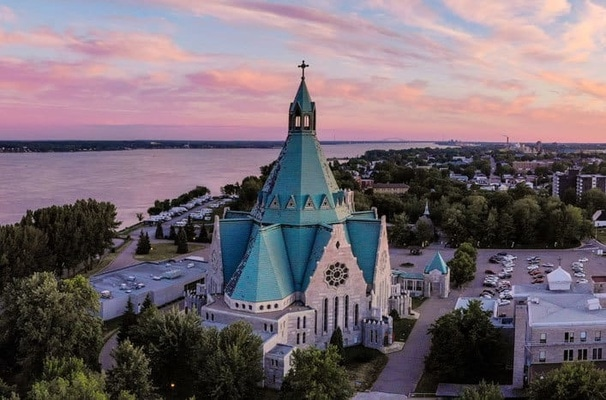 |
| Photo: Osprey Observer |
The Basilica of Notre-Dame-du-Cap is a minor basilica in Trois-Rivières, Quebec, Canada. It is Canada's national shrine to the Blessed Virgin Mary, and one of five national shrines in Canada. The site is visited by thousands of Catholic pilgrims each year.
The first church in the district of Cap-de-la-Madeleine was a small wooden structure built in 1659. In 1694, the first resident pastor, Father Paul Vachon, established the Confraternity of the Most Holy Rosary at Cap de la Madeleine. The wooden building was replaced by a fieldstone church in 1720. The hand hewn beams from the wooden church were used in the construction of the new stone church. Canon Vachon died in 1729 and is buried in the church.
For a long time the parish was without a resident pastor and fell into neglect. In 1867, Father Luc Desilets, pastor at Cap-de-la-Madeleine, re-introduced the praying of the rosary and promoted it among his parishioners. A more regular pastoral presence resulted in increased attendance, and a larger church was needed.
The church that was completed in 1888, was demolished in 1963 to make way for the square in front of the present basilica. Some of its stones were kept to make an addition to the first church in 1973. The basilica, designed by architect Adrien Dufresne, opened in 1964 and can accommodate up to 1,660 people. Reinforced concrete arches outline the building.
The Casavant organ consists of 5,425 pipes. The stained glass windows are by Dutch Oblate Father Jan Tillemans.
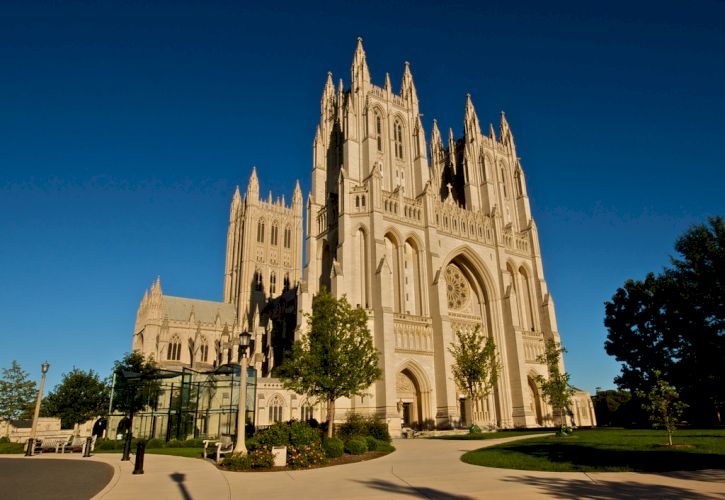 Top 15 Most Beautiful Churches In The US Top 15 Most Beautiful Churches In The US The churches can provide a glimpse into the past while offering some of the most spectacular architecture and overall structural beauty. Here is the list ... |
4. Drumheller’s Little Church, Alberta
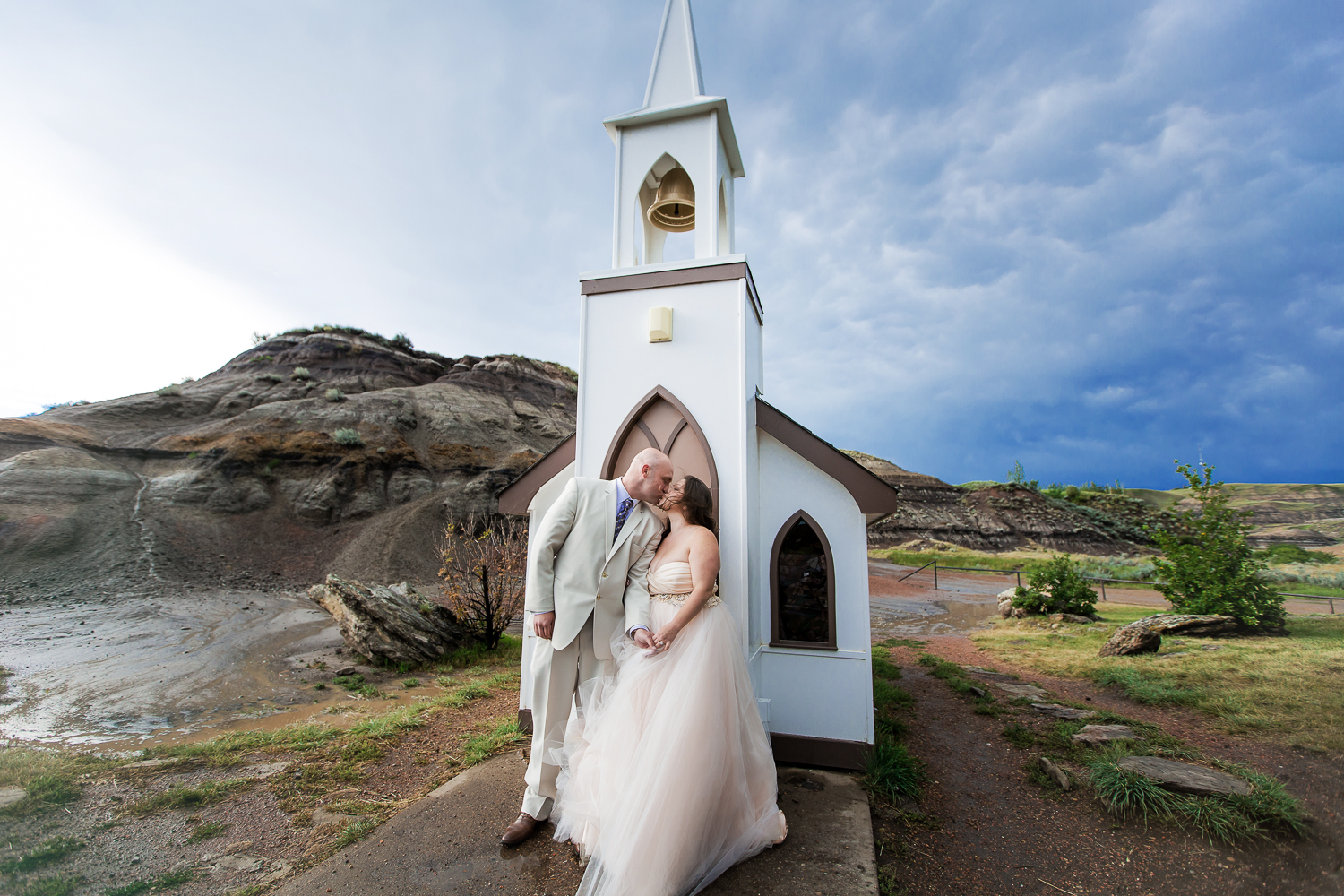 |
| Photo: Natalie Terekhova Photography |
Drumheller's Little Church, seating 10,000 people - 6 at a time. This church was first erected by local contractor Trygve Seland, in cooperation with the Ministerial Association in 1968 and was reconstructed by inmates of the Drumheller Institution in 1991. It was designed as a place of worship and meditation and not just a tourist attraction. Located on the Northside of the North Dinosaur Trail between the Royal Tyrrell Museum and the Golf Course.
The Little Church has a pulpit and six single-person pews. At one time, it also featured stained glass windows and a brass bell in its small steeple. The church is a functioning chapel that holds regular services.
3. Basilica of Sainte-Anne-de-Beaupré, Quebec
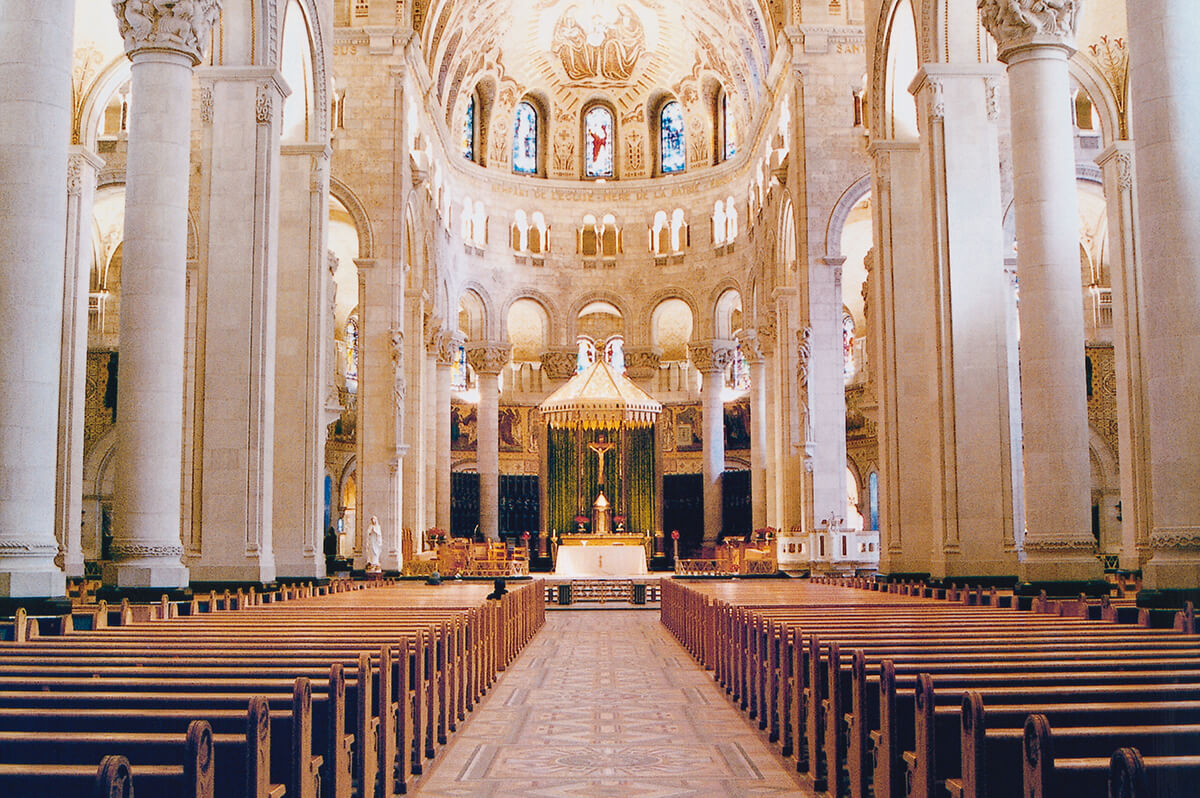 |
| Photo: Sainte-Anne-de-Beaupré |
The Basilica of Sainte-Anne-de-Beaupré is a basilica set along the Saint Lawrence River in Quebec, Canada, 30 kilometres (19 mi) east of Quebec City, and one of the five national shrines of Canada. It has been credited by the Catholic Church with many miracles of curing the sick and disabled. It is an important Catholic sanctuary, which receives about a half-million pilgrims each year. Since 1933 they have included members of the Anna Fusco Pilgrimage from Connecticut, United States of America. The peak period of pilgrimage is around July 26, the feast of Saint Anne, the patron saint of sailors.
The basilica in Sainte-Anne-de-Beaupré was initially a shrine to honour Saint Anne. On March 8, 1658, settler Etienne de Lessard donated two frontal acres from the west end of his property to the Catholic Church, so that a chapel could be built. This chapel eventually became the site of the modern-day basilica. The chapel was built to provide a place of worship for the new settlers in the area and to house a miraculous statue of St. Anne. The first reported miracle at the site happened during the shrine's construction.
A man named Louis Guimont was hired to help build the shrine even though he suffered from rheumatism. After placing three stones upon the shrine's foundation, Guimont was cured of all his ailments. This was followed by other testimonies of healed people, and the shrine soon grew in popularity. Many pilgrims came to the shrine hoping to receive a miracle while others, like Anne of Austria, wife of Louis XIII and Queen of France, supported the shrine from a distance. Because of the popularity of the shrine, the building was enlarged several times to accommodate all the pilgrims. In the late nineteenth century, a basilica was constructed around the shrine. In 1876, the first basilica opened for worship.
This was destroyed in a fire on March 29, 1922. The present-day basilica was built in 1926 on the site of the prior church. Architects Maxime Roisin, Louis N. Audet and Joseph-Égilde-Césaire Daoust collaborated on the project from 1923-1931. After the end of the Great Depression, work on the interior resumed in 1937, and was finally completed in 1946.
Pilgrims are attracted from across Canada and the United States. Miracles are still believed to occur at the basilica. Two pillars near the entrance are filled with racks of crutches, canes, braces, and other signs of disabilities. Each item has been left by a pilgrim who reports being healed at the basilica.
2. Basilica of St. John the Baptist, Newfoundland
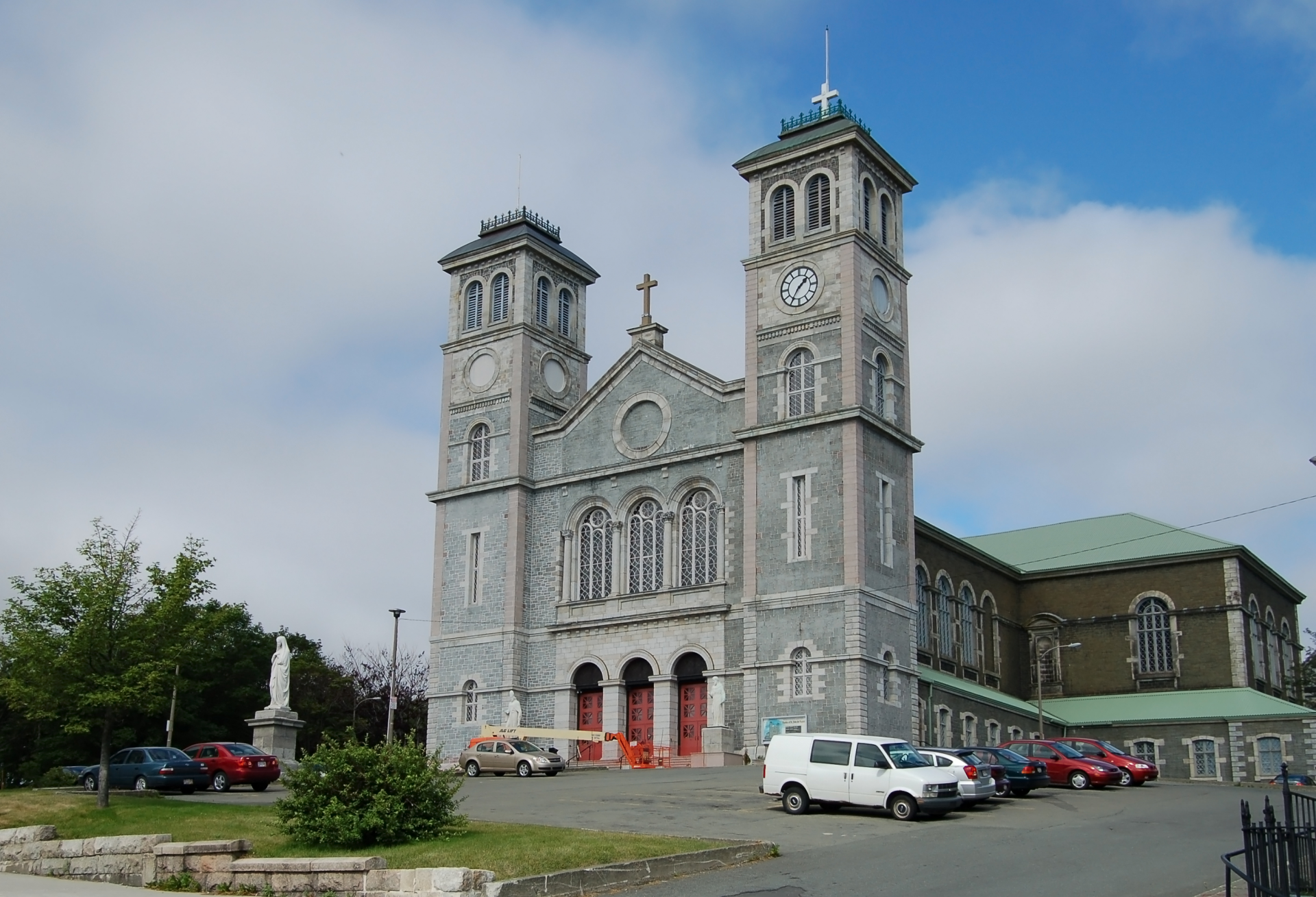 |
| Photo: Wikipedia |
The Basilica-Cathedral of St. John the Baptist in St. John's, Newfoundland and Labrador is the metropolitan cathedral of the Roman Catholic Archdiocese of St. John's, Newfoundland and the mother church and symbol of Roman Catholicism in Newfoundland. The building sits within the St. John's Ecclesiastical District, a National Historic District of Canada.
The Basilica-Cathedral was the largest building project to its date in Newfoundland history. Construction lasted from the excavation of the ground in May 1839, through the laying of the cornerstone in May 1841, until the completion and consecration on September 9, 1855. At this time, it was the largest church building in North America and remains the second largest church in Canada after Saint Joseph's Oratory in Montreal and the largest cathedral church in Canada. The Basilica-Cathedral is one of the few buildings in St. John's to survive the Great Fire of 1892.
On October 17, 2007, Bishop Martin Currie of the Diocese of Grand Falls was appointed archbishop of St. John's. He assumed his position on November 30, 2007, and retired on 29 January 2019. On December 12, 2018, Bishop Peter Hundt of the Roman Catholic Diocese of Corner Brook and Labrador was appointed archbishop of St. John's. He took canonical possession of the diocese on 29 January 2019.
1. St. John’s Anglican Church, Nova Scotia
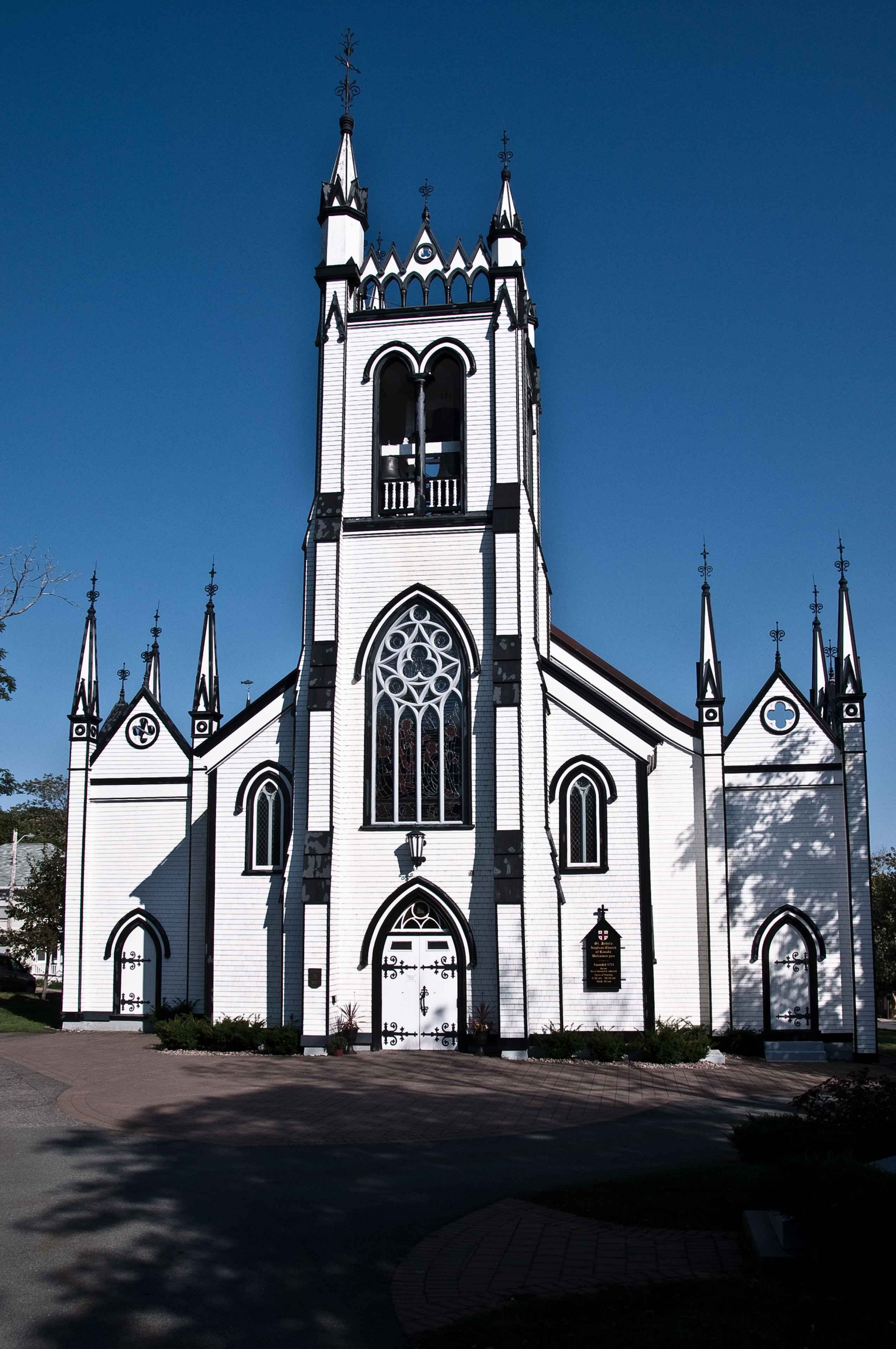 |
| Photo: Wikimedia Commons |
St. John's Anglican Church was the first church established in Lunenburg, Nova Scotia, Canada (1753). It is the second Church of England built in Nova Scotia, and is the second oldest continuous Protestant church in present-day Canada. Early on 1 November 2001, St. John's church suffered significant damage by fire. It was restored and re-dedicated June 12, 2005.
The early congregation was mainly Foreign Protestants, including Lutheran Germans. The first missionary was sent by the Society for the Propagation of the Gospel was the Rev. Jean-Baptiste Moreau (clergyman) (who is buried in the crypt below the church). Dettlieb Christopher Jessen donated a church bell that is displayed on the church grounds. (Jessen had the bell made by the Whitechapel Bell Foundry in London, the same company that made Big Ben and the Liberty Bell.) Jessen also donated a silver Paten and Chalice to the church (1814). Bells in the tower were given by Lt. Col. Charles Edwin Kaulbach (1902). Rev. Roger Aitken completed the rectory for the church on Townsend Street. The stone monument to John Creighton Sr. in the church was created by John Bacon (1777–1859), a nineteenth century sculptor. He created six monuments in St. Paul's Cathedral and many in Westminster Abbey.
The church remains a vibrant spiritual centre within the community and beyond. It is part of the Diocese of Nova Scotia and Prince Edward Island in the Anglican Church of Canada. The parish welcomed their first female rector, the Rev. Dr. Laura Marie Piotrowicz, in January 2019.
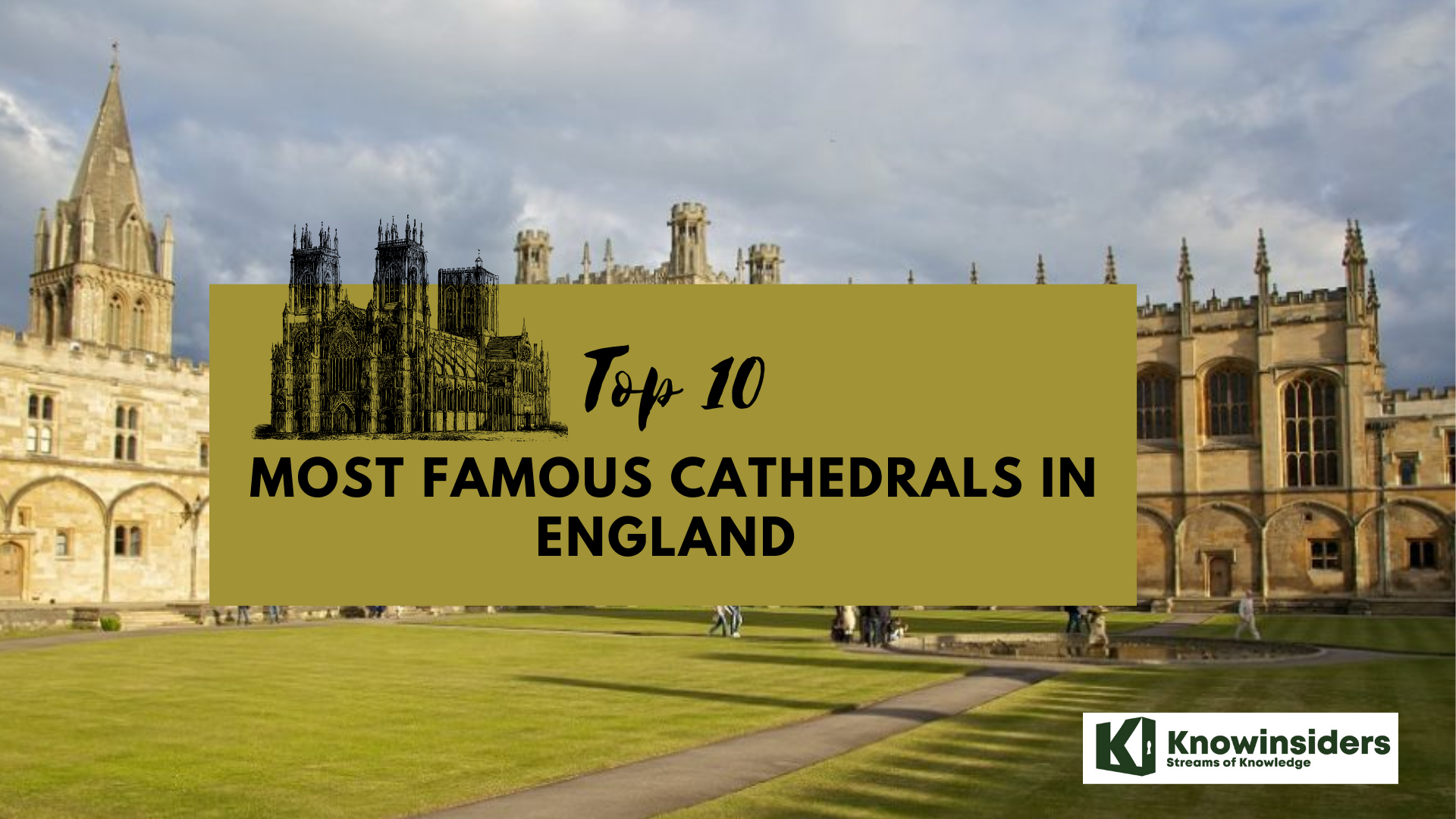 Top 10 Most Famous Cathedrals In England Top 10 Most Famous Cathedrals In England England is the land to many old and historic sites, buildings, museums, churches and cathedrals. Here is top 10 most famous cathedrals to visit when ... |
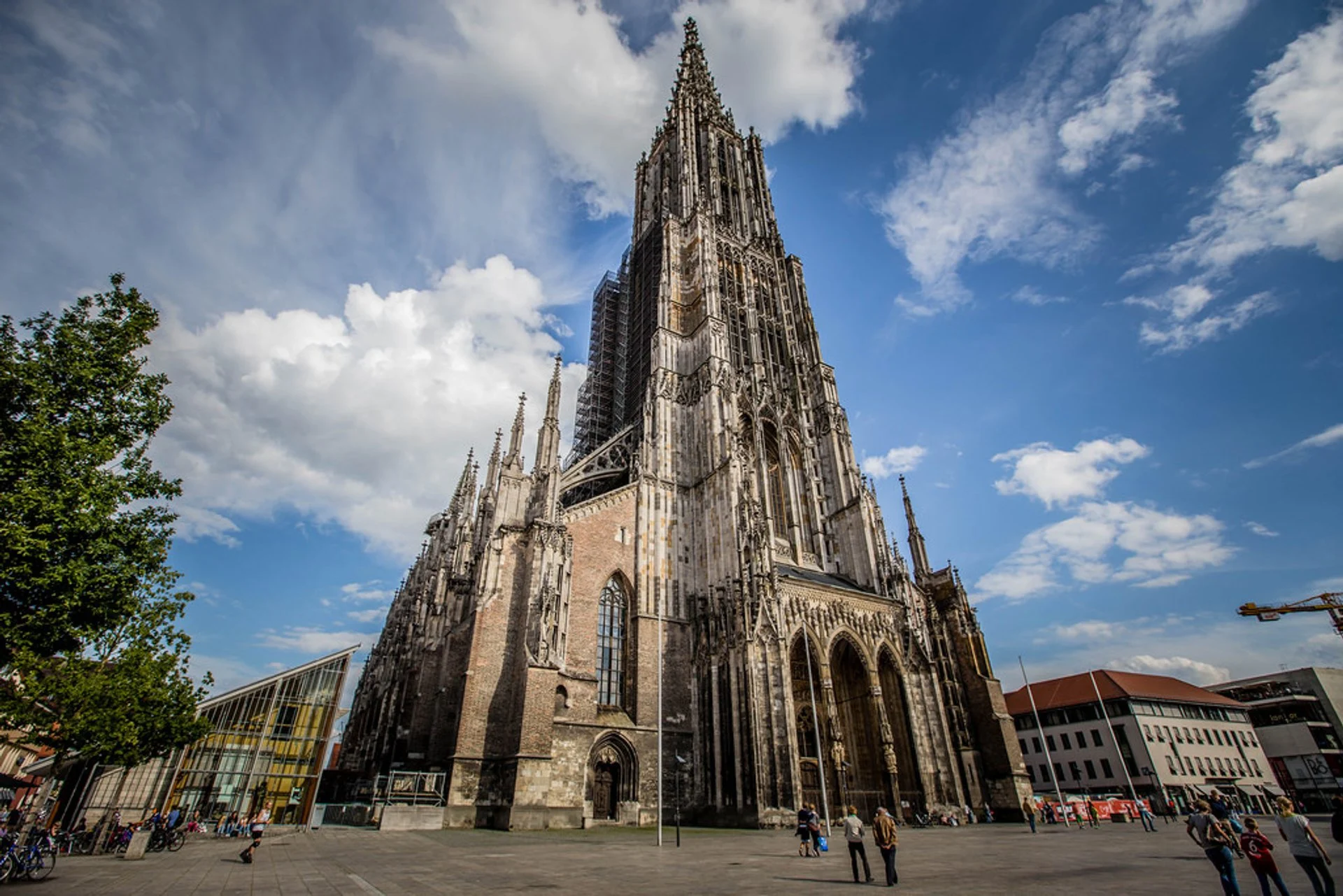 Top 10 Largest Churches In The World Top 10 Largest Churches In The World Churches are one of the oldest parts in the history, and there are many beautiful Catholic churches for you to see around the world. Here ... |
 Top 10 Largest Churches In The US Top 10 Largest Churches In The US In recent years, churches have been more than just a simple place gathering for religion, and the community has expanded greatly, along with the churches. ... |
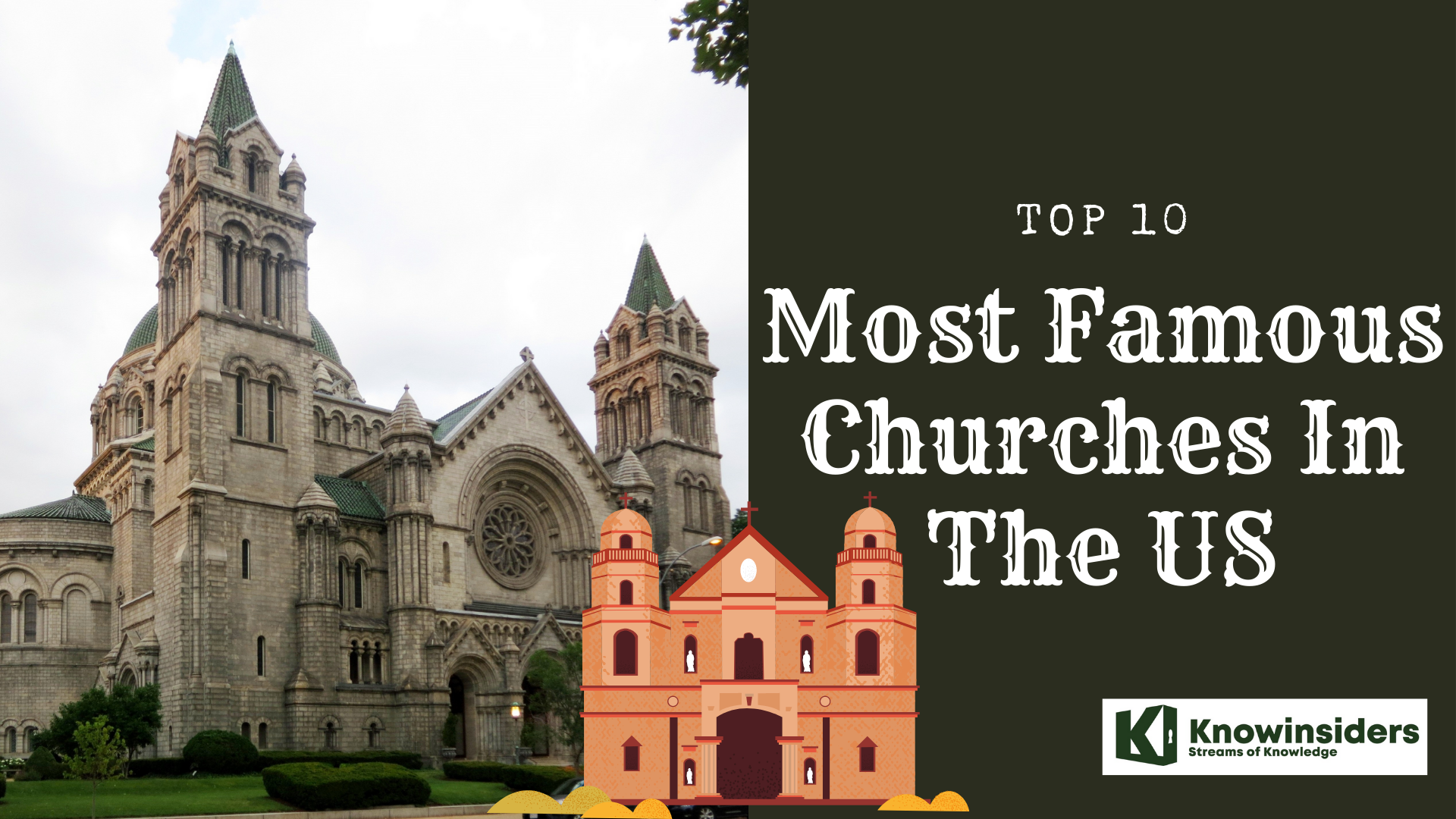 Top 10 Most Famous Churches in America Top 10 Most Famous Churches in America Church is where you come to pray, explore, arrange the weddings or learn more about Catholic history. Let's take a look at 10 most famous ... |


























